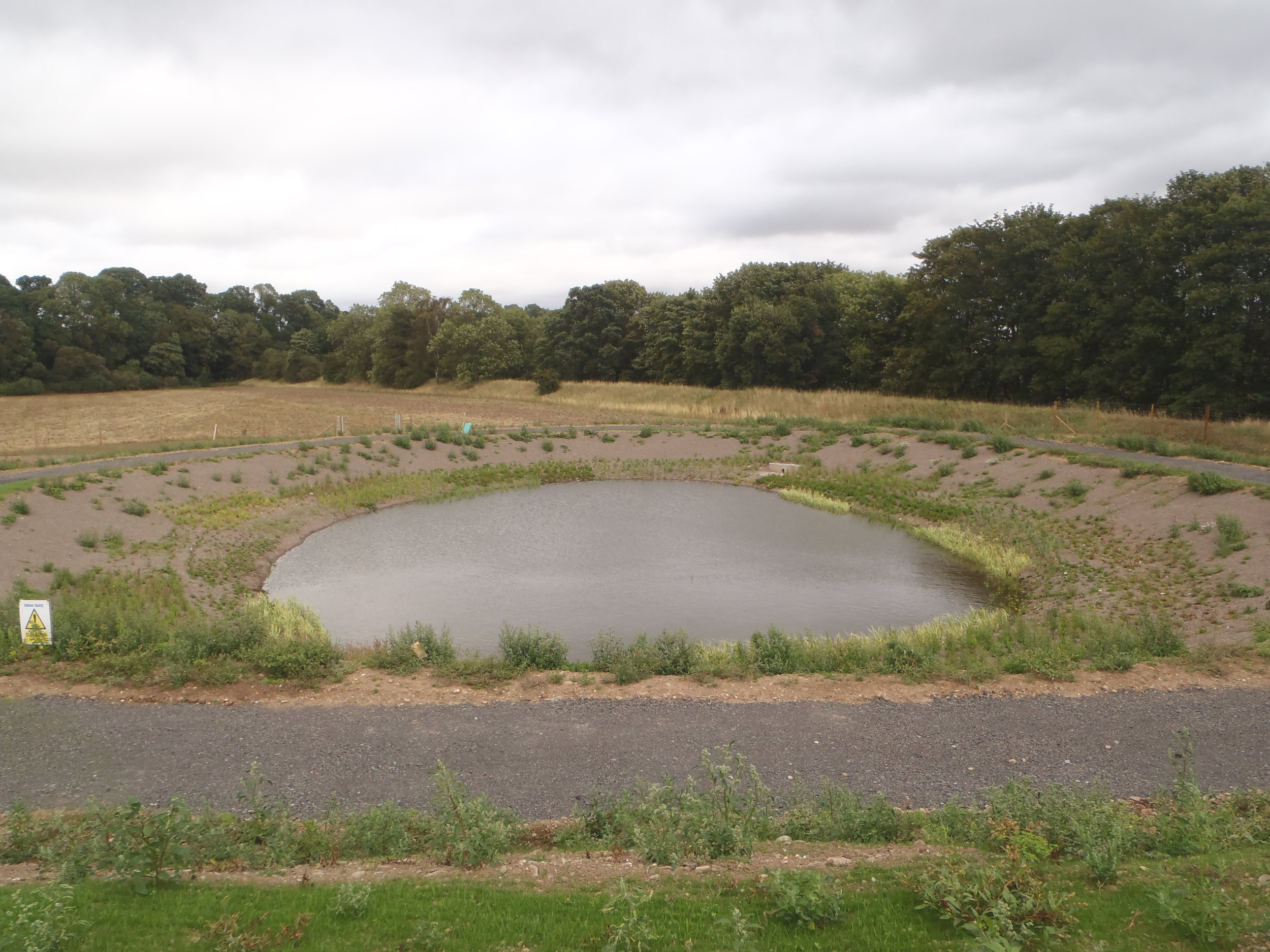Sustainable Urban Drainage Systems (SUDS) and Benefits for Wildlife
A sustainable drainage system (SUDS) is designed to reduce the potential impact of new and existing developments with respect to surface water drainage discharges. The drainage system works by mimicking natural drainage and managing potential flooding during heavy storms.
Retention ponds can provide both stormwater attenuation and treatment. Runoff from each rain event is detained and treated in the pond. The retention time promotes pollutant removal through sedimentation and the opportunity for biological uptake mechanisms to reduce nutrient concentrations.
The banks of the ponds are designed to support emergent and submerged aquatic vegetation along their shoreline. Most common native marginal wetland plants are likely to establish well in SUDS schemes with the exception of submerged plants: introductions are often unsuccessful, and submerged species are more likely to colonise by natural means if the pond is suitable for them.
Planting schemes should be restricted to the plants which are already growing in the locality and appropriate to the physical and chemical conditions. A typical semi-natural pond could be expected to support 20-30 species of wetland plants with between one and four submerged plants.
Appropriate planting will attract wildlife to a SUDs pond / system. Flowering plants will attract nectar feeding insects that will in turn attract bird species. Amphibians will be attracted to the ponds for spawing and may in turn attract otters and predatory birds such as gery heron. Further ecology enhancements can be made by adding bird and bat boxes and ‘insect refuga or hotels’.
By providing walkaways around a pond the general public can also benefit. Being outside has been shown to improve memory, fight depression and lower blood pressure.

